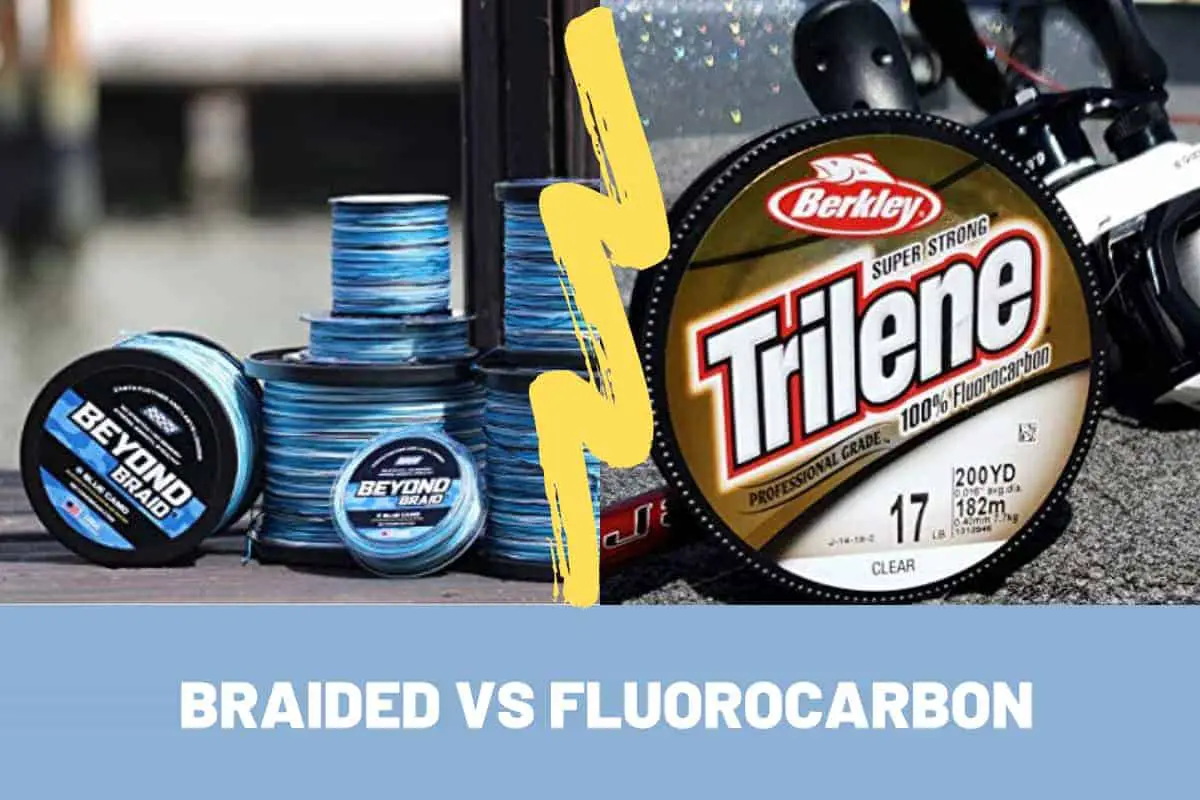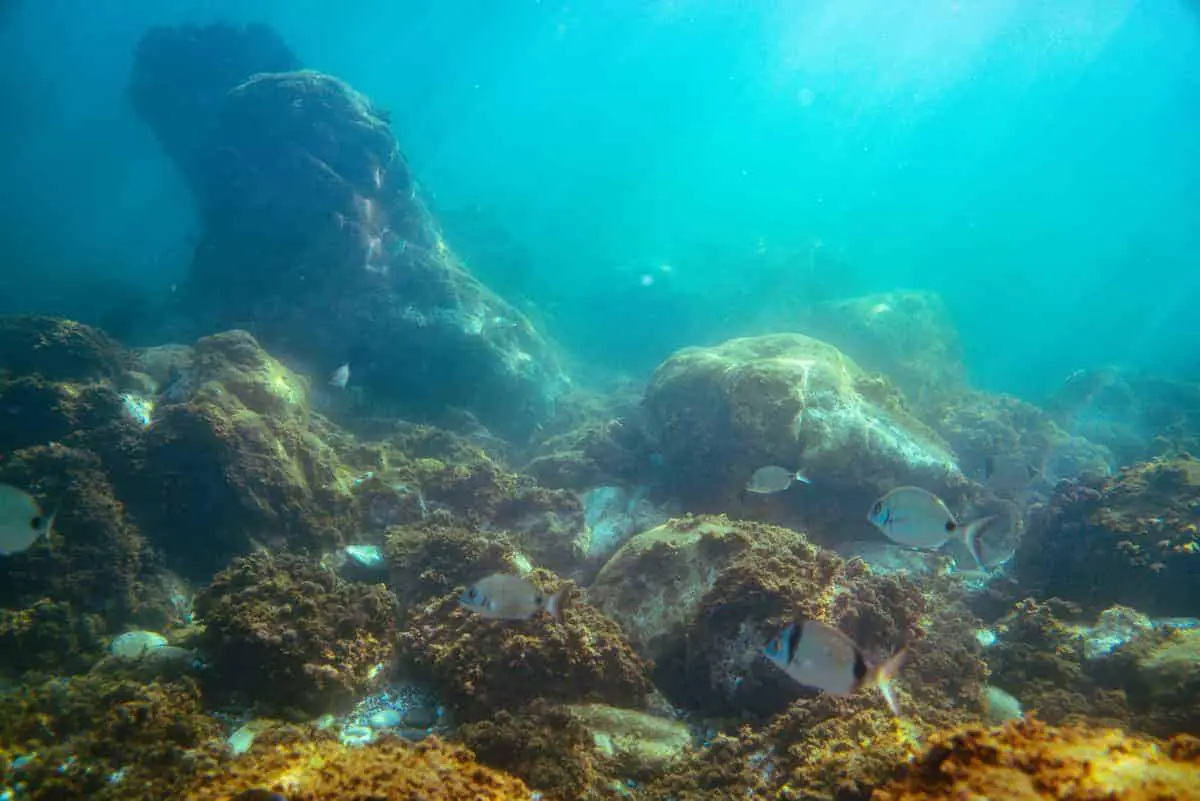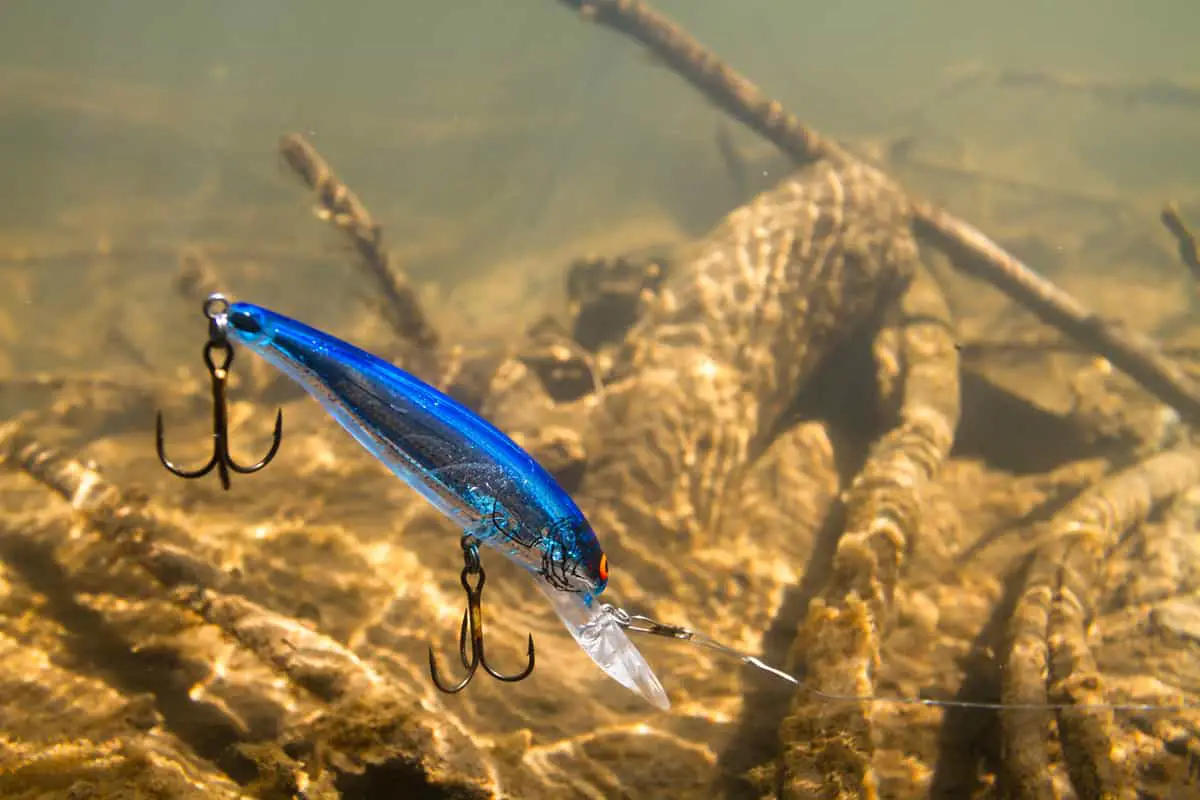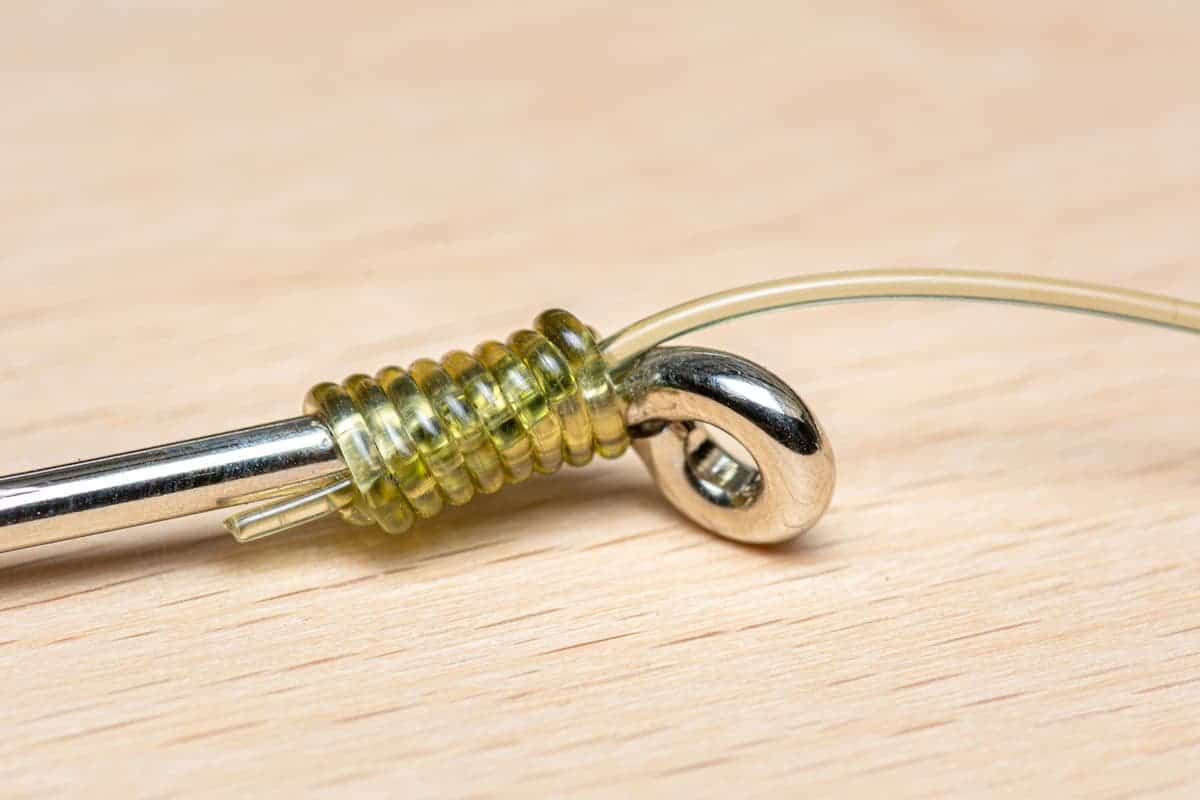Choosing the right fishing line can be confusing. With so many lines available, it may be overwhelming for some anglers to know what will work best. An enjoyable fishing trip starts with having the right equipment, and using the correct line may give you the edge that you need to land your next big catch. So which line should you choose?
Braided or Fluorocarbon?
If you’re unsure which fishing line to pick, then no worries. This is why I put together the ultimate resource for you by comparing these two fishings lines against each other to help you make that decision.

Here are the main topics covered in this post:
- Strength / Line Diameter
- Performance
- Casting
- Knotability
- Main Line Usage
- Leader Line Usage
- Life Span
- Price
- Recycability
Summary Table:
| Line Properties | Braided | Fluorocarbon |
|---|---|---|
| Line Strength | Stronger | – |
| Line Diameter | Thinner | Thicker |
| Abrasion Resistance | Low Abrasion Resistance | High Abrasion Resistance |
| Line Stretch | No Line Stretch | Stretches at 50% of Line Rating ~ 10% – 25% Stretch |
| Line Buoyancy | Floats | Sinks Fast |
| Line Memory | None | High |
| Line Visibility | Very High | Low |
| Casting | Best | Not Recommended |
| Knotability | Hard | Medium |
| Mainline usage | Best | Not Recommended |
| Leader Line Usage | Not Recommended | Best |
| Life Span | 4 – 7 Years | 1 – 5 Years |
| Recyclability | No | Yes |
Strength / Line Diameter – Braided Vs Fluorocarbon
The amount of weight a fishing line can hold is the strength designated by the line rating found on the packaging.
When comparing braided and fluorocarbon fishing lines with a rating of 20 lb, both lines can hold at least 20 lb without breaking.
Comparing line ratings is an excellent metric to compare a line’s absolute strength. But it doesn’t give you the whole picture.
If you want the strongest line that accounts for the thinnest line diameter possible. In that case, you need to account for the line’s load capacity.
The line rating is an excellent metric when comparing strength, but it doesn’t give you the whole picture when you’re looking for the “strongest line.”
The strongest fishing line can hold a particular weight while having the thinnest line diameter possible. This is also known as “line load capacity” measured in psi.
Line Diameter
Line diameter is the line thickness, and how thick a line needs to be will depend on the inherent strength of the line’s material.
If a fishing line was made from a weak material, the line diameter would be large. Whereas, if the same line was made from a stronger material, the line diameter would be smaller.
Let’s compare the braided and fluorocarbon line diameters from Berkley.
| Fireline Original Braided – 20 lb Rating | Trilene Fluorocarbon – 20 lb Rating |
|---|---|
| Line Diameter: 0.012in (0.22mm) | Line Diameter: 0.017in (0.43mm) |
The braided line is roughly 30% smaller than the fluorocarbon. Meaning that you can hold more line on a reel than you would with fluorocarbon.
But what does this mean for the line’s load capacity?
Line Load Capacity
Load capacity is a great way to measure the fishing line’s material strength.
Continuing with our example above, let’s look at the calculated load capacity for both lines.
| Fireline Original Braided – 20 lb Rating | Trilene Fluorocarbon – 20 lb Rating |
|---|---|
| Line Diameter: 0.012in (0.22mm) | Line Diameter: 0.017in (0.43mm) |
| Load Capacity: 176,928 psi | Load Capacity: 88,133 psi |
The braided fishing line clearly outperforms fluoro with about double fluorocarbon load capacity.
Performance – Braided Vs Fluorocarbon
How your fishing line performs is critical. There are tons of performance characteristics that can come into play when deciding what fishing line to use.
You will need to decide what line would be best to use depending on the type of fish you’re targeting and local water conditions.
Here are the performance characteristics to consider when comparing mono and fluoro lines.
- Abrasion Resistance
- Stretch
- Buoyancy
- Line Memory
- Visibility

Abrasion Resistance
Braided lines are produced from man-made fibers such as Dacron, Spectra, Micro-Dyneema, and fluorocarbon is made from PVDF.
These materials all have different properties, but one crucial property that matters the most for good abrasion resistance is the material’s hardness.
Material hardness can be described as the amount of force it takes to scratch the surface. For example, steel is harder to scratch than a block of wood.
PVDF is a harder and denser material than the materials used to be braided lines. Making fluorocarbon fishing lines naturally more abrasion-resistant.
Braided lines can be coated with a protective layer to up their abrasion resistance. But, this coating is more of a protective layer and is not designed to be rubbing against sharp rocks.
You should not decide on what fishing line to use solely based on abrasion resistance. That is why we have leader lines!
But for this case, fluorocarbon wins as the most abrasion-resistant fishing line.
Line Stretch
Line stretch can be a good or bad thing depending on what type of fish you’re fishing for and your method of fishing.
Line stretch can act as a shock absorber when fishing for hard striking fish. This is meant to protect your equipment from a suddenly large load on the line and prevent the hook from ripping out of the fish’s mouth when they strike.
The negative aspect of line stretch is that when you’re jigging in deep waters, the stretch will reduce line sensitivity and hooksets.
Braided lines essentially do not stretch when under tension. This makes the line a good choice when you need good sensitive, strong hooksets, or if you’re fishing in deep waters.
Fluorocarbon lines will stretch under tension, but the line will start stretching about 50% of the line rating. Fluoro will stretch between 10% – 25% of the line length in the water.
Making fluorocarbon a great choice when trolling or targeting fish that tend to strike hard.
Line Buoyancy
Knowing if your fishing line will float or sink should be vital to you as an angler as it plays a significant role in bait presentation.
Using a fishing line that sinks when you’re fishing topwater will cause you problems because you will never be where the fish are.
And the reverse is also true. Using a line that floats where you’re bottom fishing may cause issues.
Two major factors that will determine if a fishing line will sink or float is:
- Line Density
- Line Diameter
But the primary factor to consider is the line density. If the line density is heavier than the density of water, the line will sink.
If the line density is lighter than the density of water, the line will float.
| Braided | Fluorocarbon | Freshwater | Saltwater | |
|---|---|---|---|---|
| Density | 0.035 lb/in^3 (0.97 g/cm^3) | 0.0630 lb/in^3 (1.78 g/cm^3) | 0.036 lb/in^3 (1.0 g/cm^3) | 0.037 lb/in^3 (1.25 g/cm^3) |
Braided:
- 3% lighter than freshwater
- 5% lighter than saltwater
Fluorocarbon:
- 78% heavier than freshwater
- 74% heavier than saltwater
Braided lines will float on water and will not sink since the braided lines are lighter than water. It’s a great line to use if you’re fishing topwater because it won’t sink, but once you attach a lure, the lure will pull the line down. But this will happen much slower than if you used any other type of fishing line.
Fluorocarbon will definitely sink in water. If you need your bait to remain at the bottom, you’ll want to use fluorocarbon.
Line Memory
The notorious line memory has haunted anglers for many years. Dealing with a fishing line with a lot of memory can be a huge pain.
Line memory is dependent on two factors:
- Fishing Line Material
- Fishing Line Diameter
Braided lines are made from a very flexible type of fibre which is why it has very little line memory. This is one of the reasons why so many anglers love using braided lines as their mainline.
Fluoro is created from PVDF, a stiff type of plastic. The amount of line memory that fluorocarbon contains is the highest among all the different fishing lines in the market.
There have been many advancements in reducing fluorocarbon’s memory, and it has become more useable now than ever before.
Braid has virtually no line memory and would be the best choice for any angler concerned about memory.

Visibility
Line visibility plays a significant role in your bait presentation. If fish can easily detect your fishing line, it may prevent an overly cautious fish from striking. If that same fish can’t detect your fishing line, it might make the fish want to take the bait.
So what determines how visible a fishing line is underwater?
Two words – Light Refraction!
Light refraction is a term in physics that describes how light waves pass through an object or if the light waves change direction as it passes through multiple objects.
In our case, light waves will pass through the water first and then pass through the fishing line.
The closer the refraction index of a material is to water’s refraction index means light passes through a material as if it were water, making the object blend in with water.
This makes the object practically invisible underwater.
Fluorocarbon has a light refraction index closest to water, making the fishing line invisible underwater.
Most fluorocarbon lines in the market are clear because there is no need to play around with the colours.
Braided lines are really noticeable underwater. Meaning that the refraction index for braid is very different from the water’s index.
Casting – Braided Vs. Fluorocarbon
Being able to cast a fishing line is a fundamental skill that any angler will need to master. But not all fishing lines are optimum for casting.
Braided lines are considered to be the best casting line.
The low line memory prevents the line from backlashing and tangling during casting. The thin line diameter results in less air resistance as the line travels through the air. Also, the line has a very smooth external coating which helps reduce friction as the line travels through the rod guides.
All this contributes to making sure braid gives you the best cast out of all the lines.
Even though you can cast with fluorocarbon lines, it’s generally not recommended.
There are fluorocarbon lines that are advertised as casting lines, but why?
You would be better served if you used a braid as your mainline for casting and attached a fluoro leader on the bait end if you need a fluorocarbon line.

Knotability – Braided Vs Fluorocarbon
Knotability describes how easy it is to make a knot with a particular fishing line.
Braided lines are flexible, making it easy for anglers to make knots. But since their line diameters are small and the smooth outer surface makes the knots prone to becoming undone by slippage.
This knot slippage adds a unique layer of complication when tying knots. It takes practice to tie a good strong knot with braided lines. But once you get the hang of making these knots, they will hold every well.
Fluorocarbon is stiffer and not as flexible. This makes it harder to get good strong knots. Not to mention, knots made from fluorocarbon lines have a tendency to become undone over time because of the stiffness.
Braided lines would be the best for tying knots. It might take some practice, but you won’t regret it once you get it down.
These are 3 popular knots that you can use with braid and fluoro lines:
- Double Uni-knot; Braid to leader line
- Blood knot; Braid to leader line
- Palomar knot; Braid or Fluoro to a hook or lure
Main Line Usage – Braided Vs. Fluorocarbon
Picking the right fishing line for a mainline is critical to your fishing success. If you pick the wrong fishing line, you might find it harder to feel bites, get a good hookset, or can potentially damage your fishing rod.
Braided fishing lines have very different properties than fluorocarbon lines. Understanding these differences will help you better know when to use one particular line versus another.
Braided fishing lines are a great choice if you’re fishing:
- Fishing topwater
- Casting
- Jigging
- Deep Waters
- Fishing with Live-Bait
Fluorocarbon fishing lines are a great choice if you’re fishing:
- Trolling
- Near underwater structure
Due to fluoro’s line memory issues, it would be best to use braid as a mainline. It’s definitely doable to use fluoro as a mainline, but it might not be optimal.
Leader Line Usage – Braided Vs. Fluorocarbon
Fluorocarbon lines have been used as a leader line for many years and are still very popular today.
Fluorocarbon leaders have excellent abrasion resistance and are less likely to break if they encounter sharp underwater obstructions.
Combining that with fluorocarbon’s low visibility and stretch for hard-hitting fish makes fluoro leaders the best choice for many different applications.
Braided lines are not really used as leaders, to my knowledge.
They are very visible underwater which will hurt your bait presentation, and they do not play well with sharp objects, like teeth.
For these two reasons, braided leaders are not generally recommended by most anglers.
Fluorocarbon would be the best choice for a leader line about 90% of the time. Unless you are fishing a lot of topwater, use a monofilament leader.
Life Span – Braided Vs. Fluorocarbon
The life span of a fishing line will determine how often you should be replacing your fishing line.
A fishing line’s life span depends on a wide range of parameters. Generally speaking, here is a rough estimate of when you should be replacing your line.
- Braided
- Life Span: 2 – 4 years
- Life Span: 2 – 4 years
- Fluorocarbon
- Life Span: 1 – 5 years
Price – Braided Vs. Fluorocarbon
Regardless of how good a line is compared to another, we’ll pay for whatever line we can comfortably afford at the end of the day.
Braided lines are the most expensive fishing line that you can purchase. The reason for this is mainly due to the material and manufacturing process.
Fluorocarbon fishing lines are also expensive but not as much as braided lines.
Recyclability – Braided Vs. Fluorocarbon
Braid and fluorocarbon lines are made from man-made plastics. These plastics do not easily break down in the environment. In fact, it can take about 600 years before these fishing lines can break down in the environment.
The good news is that fluorocarbon lines are recyclable! Some of the largest fishing line producers like Berkley participate in a massive recycling program to help anglers dispose of their old fishing lines.
Unfortunately, braided lines are not recyclable! The only way to dispose of braided lines is to cut the line into small 6 inch long segments and put them in the trash.
Happy Fishing & Tight Lines
